Aylesbury Estate
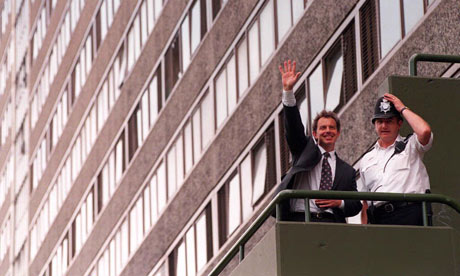 The Aylesbury estate regeneration was initiated by Tony Blair as part of New Labour’s ‘Urban Task Force’ inner-city renewal programme. He chose the Aylesbury as the location for his inaugural ‘forgotten people’ speech, directly after being voted in as prime minister in 1997.
The Aylesbury estate regeneration was initiated by Tony Blair as part of New Labour’s ‘Urban Task Force’ inner-city renewal programme. He chose the Aylesbury as the location for his inaugural ‘forgotten people’ speech, directly after being voted in as prime minister in 1997.
The Aylesbury was subsequently awarded £56m funding under the ‘New Deal for Communities’ partnership as part of Blair’s urban renewal programme.
Failed Ballot
 In 2001, residents on the estate were balloted on the prospect of stock transfer and redevelopment by a Housing Association. There was a high turnout (73%) and over 70% of residents voted against the proposals. This council Executive report postulates that one of the reasons behind the ‘NO’ vote was that residents were concerned that they would have to pay higher rents and service charges on the redeveloped estate.
In 2001, residents on the estate were balloted on the prospect of stock transfer and redevelopment by a Housing Association. There was a high turnout (73%) and over 70% of residents voted against the proposals. This council Executive report postulates that one of the reasons behind the ‘NO’ vote was that residents were concerned that they would have to pay higher rents and service charges on the redeveloped estate.
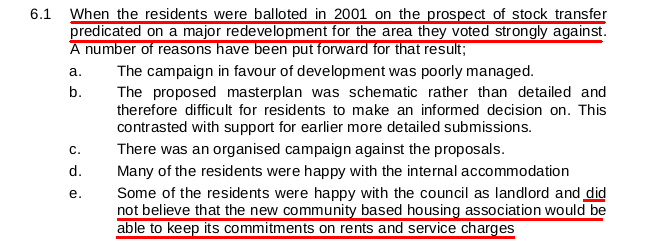
In 2002, the council’s Head of Housing Regeneration said it was planning to press ahead with the redevelopment regardless, claiming that bringing the existing estate up to scratch would cost £200 million, a sum that the council simply didn’t have.
Social or ‘affordable’ rent
Residents’ concerns about Housing Associations charging higher rents turned out to be well founded, when it emerged that Notting Hill Housing (the council’s development partner) had secured funding for the scheme, which was linked to the provision of affordable rent rather than social rent (nevertheless capped at 50% rather than 80% market rent). However, even capped at 50% market rent Southwark’s own housing data shows that the minimum income required to afford this, is twice what Southwark council tenants earn on average.
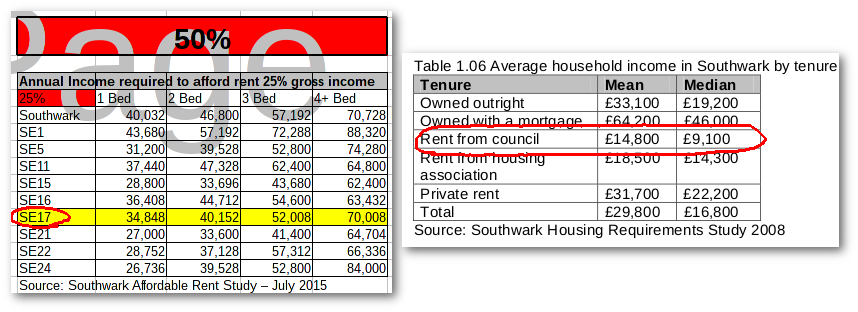 Southwark housing data showing affordability & average income
Southwark housing data showing affordability & average income
The council insists that all new rented homes will be social rented not affordable rent, but revelations that Notting Hill had delivered affordable rent instead of the social rent agreed at its Bermondsey Spa regeneration, have further thrown these promises into doubt.
The council also insists that Notting Hill has a contractual obligation to provide social rent rather than affordable rent in the redevelopment. But its contractual agreement contains no reference to the term social rent whatsoever. Instead it refers just to ‘target rent’ set by government, without any reference to the term social rent or the National Rent Regime regulatory framework which governs it. There is an obvious concern that this could be interpreted as affordable rent, as there are’target rents’ for both social rent and affordable rent set by government.
 Extract from the Development Partnership Agreement
Extract from the Development Partnership Agreement
In any case Notting Hill’s planning application for the redevelopment admits that there will be an overall loss of 934 social rented units through the redevelopment (assuming that the replacements will be social, not affordable rent:
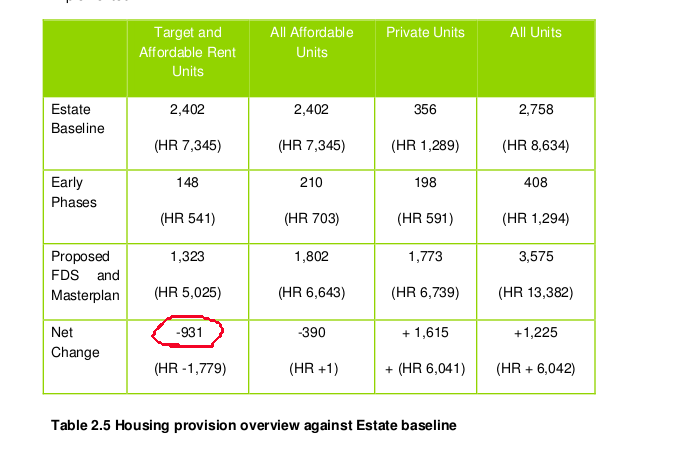 Notting Hill Planning Application
Notting Hill Planning Application
Note that the replacement social housing is referred to both as social rent and affordable rent throughout the planning application documents.
Harvard Gardens
 Site 7 ‘Harvard Gardens’ - (formerly known as the Wolverton blocks)
Site 7 ‘Harvard Gardens’ - (formerly known as the Wolverton blocks)
The most recent phase of the scheme (site 7 - Wolverton/‘Harvard Gardens’) is being developed by L&Q and comprises 147 new homes, of which 48 will supposedly be for ‘social rent’. However, the section 106 planning agreement for the site says ‘affordable rent’ and a question put to the Mayor confirms that these will be let at affordable rent of up to 50% market rent.
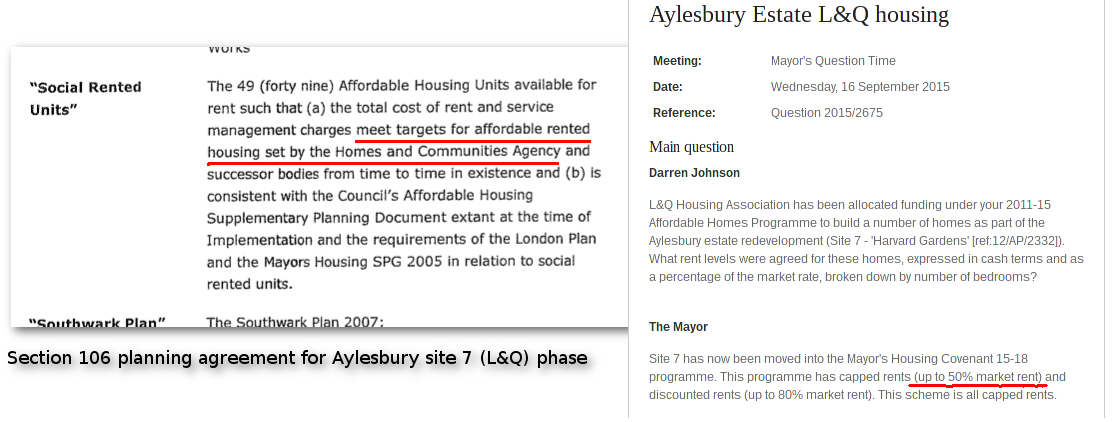 S106 agreement extract and Question to Mayor
S106 agreement extract and Question to Mayor
Refurb vs Demolition
At the 2015 CPO Public Inquiry, Professor Jane Rendell from the Bartlett School of Architecture questioned the council’s cost/benefit appraisal for its decision to redevelop rather than refurbish. She took the Inquiry through all of the figures and showed that cost estimates for refurbishment had been inflated by nearly £150m. (See AJ article).
Objectors gave evidence showing that later phases of the estate had been allocated funds under the council’s WDS programme (Decent Homes Standard works programme). They showed the Inquiry section 20 invoices that they had been sent by the council, detailing the estimated cost of the Decent Homes Standard major works charges, i.e. bringing the homes up to modern standards. These showed that homes on the estate were being brought up to Decent Homes Standard at an average cost of just £20,261 per home1.
It was also confirmed during the course of the Public Inquiry, that the council has spent a staggering £46.8m on the Aylesbury regeneration scheme to date. This has comprised total capital account costs of £32.1m (demolition & acquisiton) and revenue account costs amounting to £14.7m (Management & Administration).
The council has therefore spent £46.8m demolishing and redeveloping 112 homes2 on the scheme to date (£417k per home), compared to the £20,261 per home it is spending bringing homes up to Decent Homes Standard elsewhere on the estate.
When the Council Executive took its decision to redevelop the estate in September 2005, it did so on the basis of a costings estimate which calculated that the scheme would incur an overall cost to the Council of £16.1m over the scheme’s 10-year development period. However, the Council’s budget books show that it is spending nearly £14m on the Aylesbury scheme during the 2015/16 year alone.
 Other London boroughs take a different approach to regeneration. Islington has an estate called the Six Acres estate near Finsbury Park. The Six Acres estate was built at the same time as Heygate & Aylesury, by the same contractors (Laing) using the same system (Jespersen 12M).
Other London boroughs take a different approach to regeneration. Islington has an estate called the Six Acres estate near Finsbury Park. The Six Acres estate was built at the same time as Heygate & Aylesury, by the same contractors (Laing) using the same system (Jespersen 12M).
Instead of demolshing its estate and handing it over to the private sector at a loss, Islington Council chose to refurbish the Six Acres estate in 2012. The 473 homes on the estate were refurbished with new external wall insulation, new entry doors, exterior furnishing improvements, green roofs and cycle shelters.
The entire Six Acres estate refurbishment and public realm improvement works cost a total of just £5.15m. This works out at around £10k per dwelling; far less than the circa £60k per dwelling that Southwark Council is spending on emptying and demolshing the Aylesbury estate (£150m/2500 homes).
Extensive research by the University College London and case studies by leading architects has shown that refurbishment is better not just financially, but also socially and environmentally.
More information about the Six Acres estate regeneration can be found here, here, here, here and under planning application ref: P072153 on Islington Council’s Planning Portal.
 Photos of Six Acres before regeneration
Photos of Six Acres before regeneration

Design Criticisms
Clearly the business case for refurbishment is much stronger than that for demolition. However, Southwark says it’s not about the fabric of the estate but its design. In her Public Inquiry evidence, Southwark’s in-house architect confirmed that “the condition of the buildings does not, itself present a case for demolition and redevelopment” but that the “fundamental issue is the estate layout and the poor urban environment this presents”. In paragraph 5.3 of her evidence she gives examples of this ‘poor urban environment’ which include criticisms that:
“The scale and orthogonal formation of the blocks (some of the longest in Europe) does not correspond to human scale, nor does it create opportunities for neighbourliness and local neighbourhood identity.”
“The estate roads, which serve to access gargages, typically terminate in dead ends, and have little relationship to front doors of dwellings”. This means that “residents are deprived of a clear address, and identity, and experience various practical inconvenincies i.e. deliveries finding it difficult to locate front doors.”
“Lack of ownership” of the estates green spaces, means that “they are under used”.
So translating the architect speak to plain English we can say that Southwark is spending twice as much demolishing the Aylesbury estate than it would cost to refurbish it, on the grounds that the green spaces are “under used” and the lack of a traditional street layout “deprives” residents of a “clear identity”.
More criticisms of the estate and grounds for its demolition can be found in other officers’ proofs of evidence submitted to the Public Inquiry:
Jackie Fearon - Aylesbury Area Manager, Southwark Council Elaine Taylor - Senior Regeneration & Development Manager, L&Q Housing Mark Maginn - Sales & Acquisitions Manager, Southwark Council Tim Cutts - Planning Policy Team Leader, Southwark Council Jane Seymour - Development Partnership Broker, Southwark Council
Prudent Profits
The 35% Campaign has also obtained a redacted copy of Notting Hill’s viability assesment for the Aylesbury redevelopment via an FOI/EIR request. Despite being a registered charity, Notting Hill has claimed commercial confidentiality as the grounds for its redactions. Interestingly we see that despite the development being publicly funded and built on public land, Notting Hill claims that “increasing the number of affordable homes would result in the scheme falling below the prudent profit level for Notting Hill”.
Environment/Sustainability
The Aylesbury estate masterplan outline planning application gave consent for a total of 1,378 parking spaces in the new development, equating to four out of ten new households with parking.3
The officer’s report for the Aylesbury masterplan application also confirms that there will be a net loss of 1.8 hectares of open space as a result of the redevelopment:
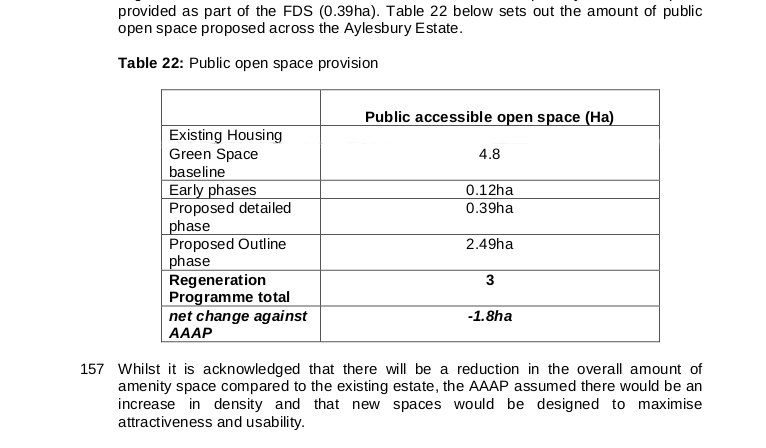 Officer report para 156 - net loss of open space
Officer report para 156 - net loss of open space
Further, the new open spaces in the development will not be public open spaces adopted by the council; they will be privately owned and managed by a subsidiary of Notting Hill Housing Group.
Footnotes:
2005 Frost Associates April 2005 BPTW
(Redacted) Development Partnership Agreement(DPA) (Redacted) DPA Appendices (Redacted) DPA Appendix 7 - Business Plan
-
Pg 2 of the section 20 invoice shows that 611 homes are being brought up to Decent Homes Standard at a total cost of £12,380,030 - (average = £20,261).↩
-
Aylesbury homes demolished to date: 1-41 Bradenham & 1-12 Red Lion Close (site 1a), 1-59 Wolverton (site 7) - [Total = 112].↩
-
See paragraph 2.5.1 of the masterplan application’s Transport Statement↩
